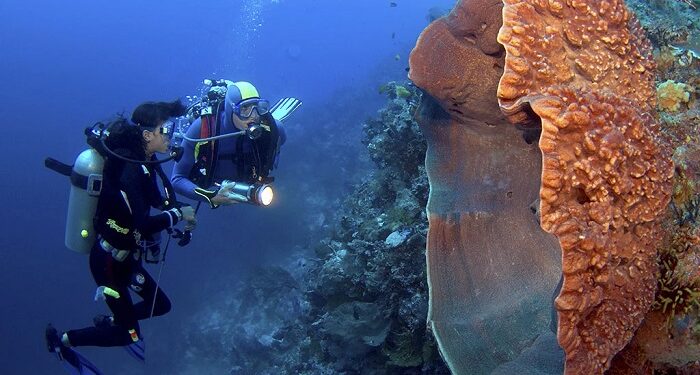Beneath the azure depths of the ocean, a world of wonders unfolds, and among its most unassuming inhabitants are sea sponges. These intriguing creatures, often overlooked, play a vital role in the intricate dance of marine life. In this concise exploration, we dive into the captivating realm of sea sponges in the sea, shedding light on their unique characteristics and the crucial role they play in sustaining the health of our oceans.
Unassuming Elegance: Sea sponges, with their simple yet elegant structures, quietly grace the ocean floor. Lacking complex organs or nervous systems, these creatures are elemental in their design. Their bodies, supported by a matrix of proteins and minerals, reflect a minimalist beauty that captivates those who take the time to observe.
- Filtration Pioneers: At the heart of sea sponge lies a remarkable talent – natural filtration. Tiny pores cover their surfaces, allowing them to continuously pump and filter vast amounts of seawater. This not only helps them extract nutrients but also serves as a critical function for the health of the marine environment. Sea sponges act as silent custodians, purifying the water and contributing to the overall clarity of their underwater homes.
- Underwater Architects: Sea sponges showcase an array of shapes and sizes, from encrusting forms to branching structures. Their diverse architectural designs provide shelter and refuge for numerous marine organisms. In a world where space is at a premium, the structures created by sea sponges become valuable real estate, fostering biodiversity and supporting the life cycles of various underwater species.
- Ancient Survivors: These seemingly unassuming creatures have stood the test of time. Sea sponges boast an ancient lineage, predating even the dinosaurs. Their ability to adapt to changing environmental conditions over millions of years highlights their resilience. As sentinels of the past, sea sponges offer insights into the evolutionary history of life on Earth.
- Mysterious Reproduction: Sea sponge reproduction adds an element of mystery to their existence. Some species reproduce asexually through budding or fragmentation, while others release specialized cells that can develop into new individuals. This diversity in reproductive strategies contributes to the dynamic and adaptable nature of sea sponge populations.
Conclusion: In the depths of the ocean, where sunlight fades and mysteries abound, sea sponges quietly thrive, embodying the essence of resilience and simplicity. Their unassuming elegance, coupled with their vital ecological roles, makes them unsung heroes of the marine world. As we navigate the challenges of ocean conservation, recognizing and appreciating the importance of these hidden marvels becomes crucial. Preserving the habitats of sea sponges is not just an act of environmental stewardship but a commitment to ensuring the continued health and balance of our oceans.
















